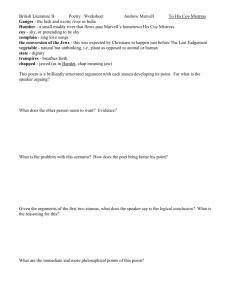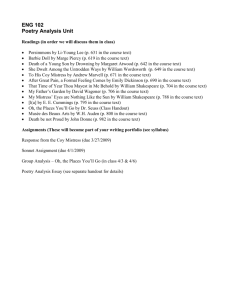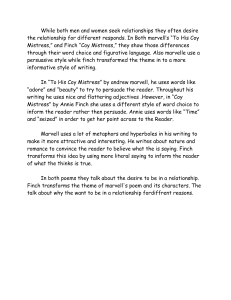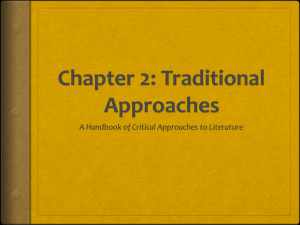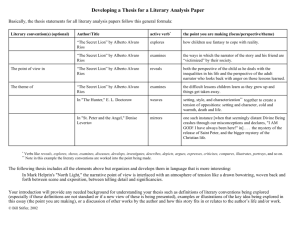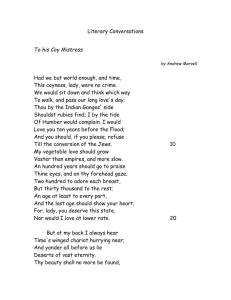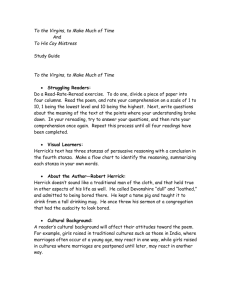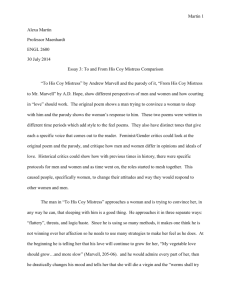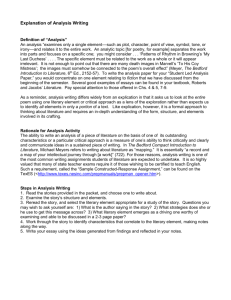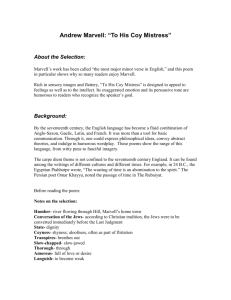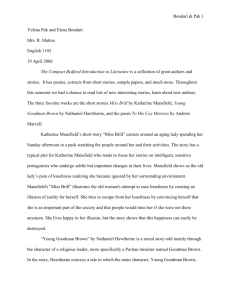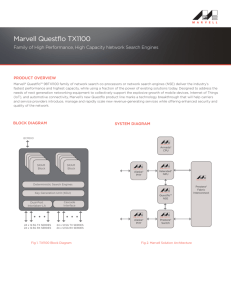Developing a Thesis for a Literary Analysis Paper
advertisement
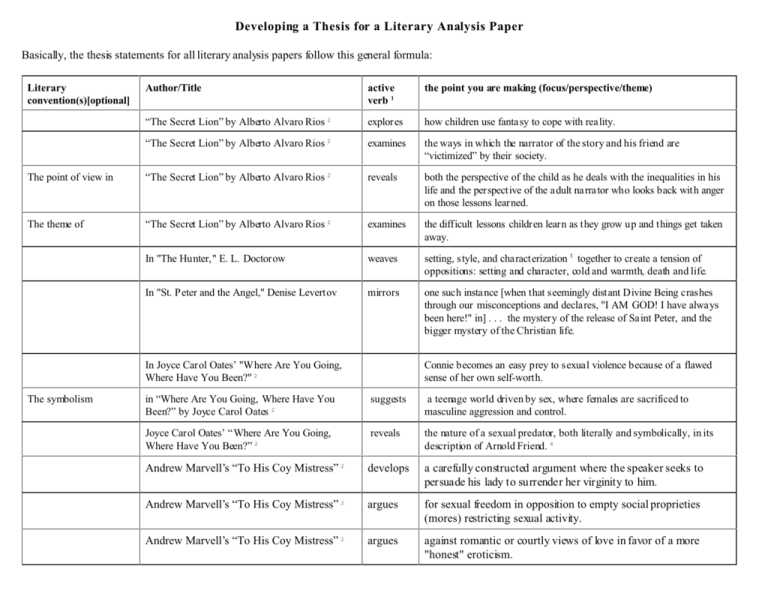
Developing a Thesis for a Literary Analysis Paper Basically, the thesis statements for all literary analysis papers follow this general formula: Author/Title active verb 1 the point you are making (focus/perspective/theme) “The Secret Lion” by Alberto Alvaro Rios 2 explores how children use fanta sy to cope with reality. “The Secret Lion” by Alberto Alvaro Rios 2 examines the ways in which the narrator of the story and his friend are “victimized” by their society. The point of view in “The Secret Lion” by Alberto Alvaro Rios 2 reveals both the perspective of the child as he deals with the inequalities in his life and the perspective of the adult na rra tor who looks back with anger on those lessons learned. The theme of “The Secret Lion” by Alberto Alvaro Rios 2 examines the difficult lessons children learn as they grow up and things get taken away. In "The Hunter," E. L. Doctorow weaves setting, style, and characterization 3 together to create a tension of oppositions: setting and character, cold and warmth, death and life. In "St. Peter and the Angel," Denise Levertov mirrors one such insta nce [when that seemingly distant Divine Being crashes through our misconceptions and declares, "I AM GOD! I have always been here!" in] . . . the mystery of the release of Saint Peter, and the bigger mystery of the Christian life. Literary convention(s)[optional] In Joyce Carol Oates’ "Where Are You Going, Where Have You Been?" 2 The symbolism Connie becomes an easy prey to sexual violence because of a flawed sense of her own self-worth. in “Where Are You Going, Where Have You Been?” by Joyce Carol Oates 2 suggests a teenage world driven by sex, where females are sacrificed to masculine aggression and control. Joyce Carol Oates’ “Where Are You Going, Where Have You Been?” 2 reveals the nature of a sexual predator, both literally and symbolically, in its description of Arnold Friend. 4 Andrew Marvell’s “To His Coy Mistress” 2 develops a carefully constructed argument where the speaker seeks to persuade his lady to surrender her virginity to him. Andrew Marvell’s “To His Coy Mistress” 2 argues for sexual freedom in opposition to empty social proprieties (mores) restricting sexual activity. Andrew Marvell’s “To His Coy Mistress” 2 argues against romantic or courtly views of love in favor of a more "honest" eroticism. Literary convention(s)[optional] Author/Title active verb 1 the point you are making (focus/perspective/theme) Andrew Marvell’s “To His Coy Mistress” 2 reveals the speaker's attempt to use the physical pleasures of sex to resist, ignore, or escape the empty reality of a lifeless eternity. Andrew Marvell’s “To His Coy Mistress” 2 expresses a cynical, self-centered view of life that sees the only escape from the despair of a lifeless eternity in the physical pleasures of sexual intimacy. Andrew Marvell’s “To His Coy Mistress” 2 expresses a cynical view of life through the use of hyperbole, sexual innuendo, and mocking humor. 3 Andrew Marvell’s “To His Coy Mistress” 2 argues that life must be lived to its fullest because life is fleeting (carpe diem). “My Oedipus Complex” by Frank O’Connor, “What We Talk About When We Talk About Love” by Raymond Carver, and “Hunters in the Snow” by Tobias Wolff 5 examine the conflicts that can erupt between individuals in close relationships and the consequences those conflicts can have on people’s lives. “Boys and Girls” by Alice Munro and “The Things They Carried” by Tim O’Brien 5 explore the struggles people have with the restrictions imposed on them by gender and the efforts they make to cope. 1 Verbs like reveals, explores, shows, examines, discusses, develops, investigates, describes, depicts, argues, expresses, criticizes, compares, illustrates, portrays, and so on. These statements demon strate how the same work is open to mult iple interpr etations. 3 Note in this example t he liter ary convention s are worked in to the point being made. 4 Notice that a thesis does not have to explain the whole work but can focus on a single aspect (in this case, one of the characters). 5 This example ill ustrates a th esis comparing mul tiple works. 2 The following thesis follows the same basic pattern but deals with multiple works and places the conventions after the list of titles: “My Oedipus Complex” by Frank O’Connor, “Boys and Girls” by Alice Munro, “The Red Convertible” by Louise Erdrich, and “The Things They Carried” by Tim O’Brien each contains a central image that illustrates each story’s theme, which defines the conflict faced by the main character(s). The following thesis includes all the elements above but organizes and develops them in language that is more interesting: In Mark Helprin's "North Light," the narrative point o f view is interlaced with an atmosphere of tension like a drawn bo wstring, woven back and forth between scene and exposition, between telling detail and significance. Your introduction will provide any needed background for understanding your thesis such as definitions of literary conventions being explored (especially if those definitions are not standard or if a new view of these is being presented), examples or illustrations of the key idea being explored in this essay (the point you are making), or a discussion of other works by the author and how this story fits in or relates to the author’s life and/or work. © Bill Stifler, 2002, 2011
